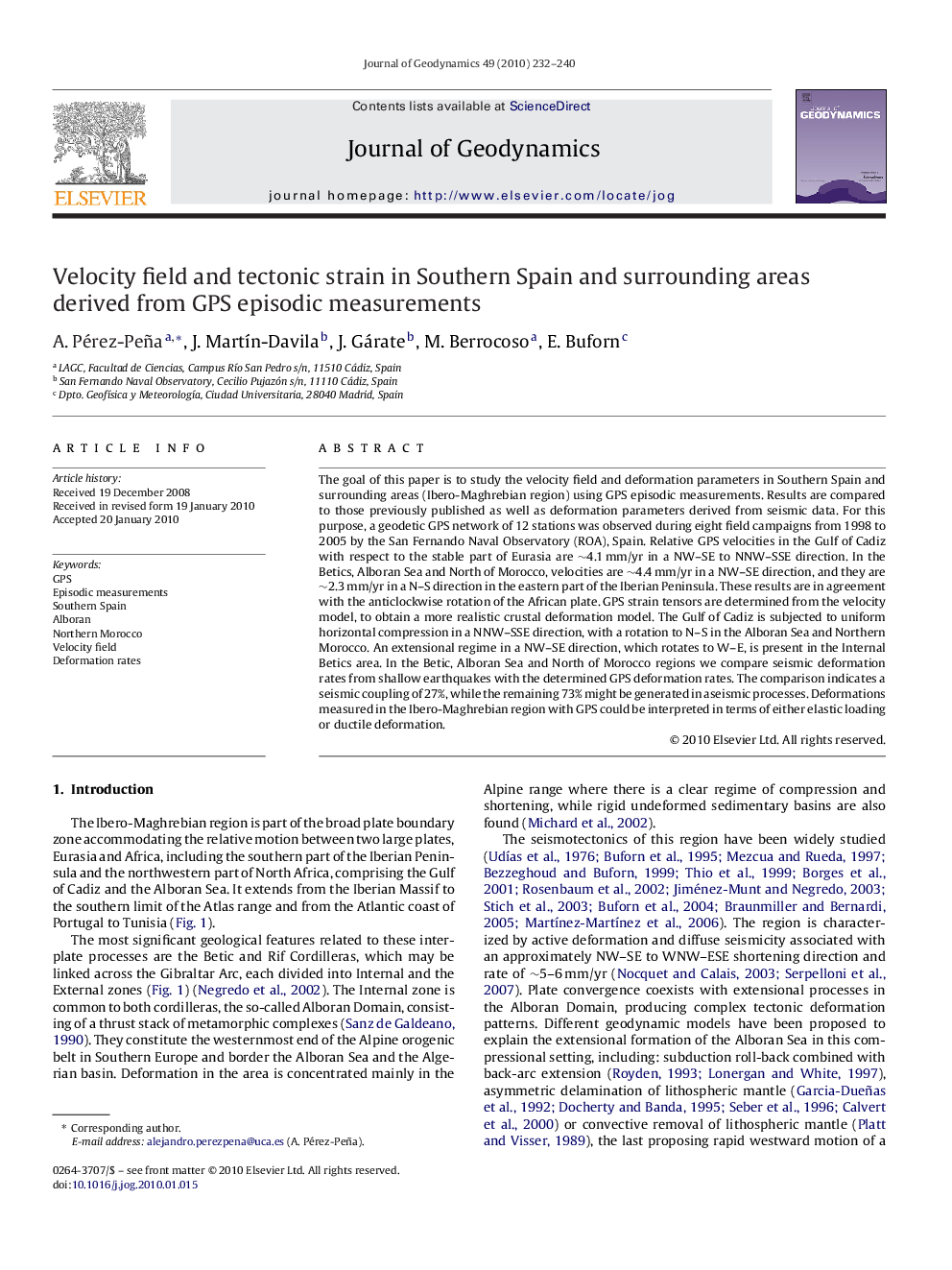| Article ID | Journal | Published Year | Pages | File Type |
|---|---|---|---|---|
| 4688569 | Journal of Geodynamics | 2010 | 9 Pages |
The goal of this paper is to study the velocity field and deformation parameters in Southern Spain and surrounding areas (Ibero-Maghrebian region) using GPS episodic measurements. Results are compared to those previously published as well as deformation parameters derived from seismic data. For this purpose, a geodetic GPS network of 12 stations was observed during eight field campaigns from 1998 to 2005 by the San Fernando Naval Observatory (ROA), Spain. Relative GPS velocities in the Gulf of Cadiz with respect to the stable part of Eurasia are ∼4.1 mm/yr in a NW–SE to NNW–SSE direction. In the Betics, Alboran Sea and North of Morocco, velocities are ∼4.4 mm/yr in a NW–SE direction, and they are ∼2.3 mm/yr in a N–S direction in the eastern part of the Iberian Peninsula. These results are in agreement with the anticlockwise rotation of the African plate. GPS strain tensors are determined from the velocity model, to obtain a more realistic crustal deformation model. The Gulf of Cadiz is subjected to uniform horizontal compression in a NNW–SSE direction, with a rotation to N–S in the Alboran Sea and Northern Morocco. An extensional regime in a NW–SE direction, which rotates to W–E, is present in the Internal Betics area. In the Betic, Alboran Sea and North of Morocco regions we compare seismic deformation rates from shallow earthquakes with the determined GPS deformation rates. The comparison indicates a seismic coupling of 27%, while the remaining 73% might be generated in aseismic processes. Deformations measured in the Ibero-Maghrebian region with GPS could be interpreted in terms of either elastic loading or ductile deformation.
